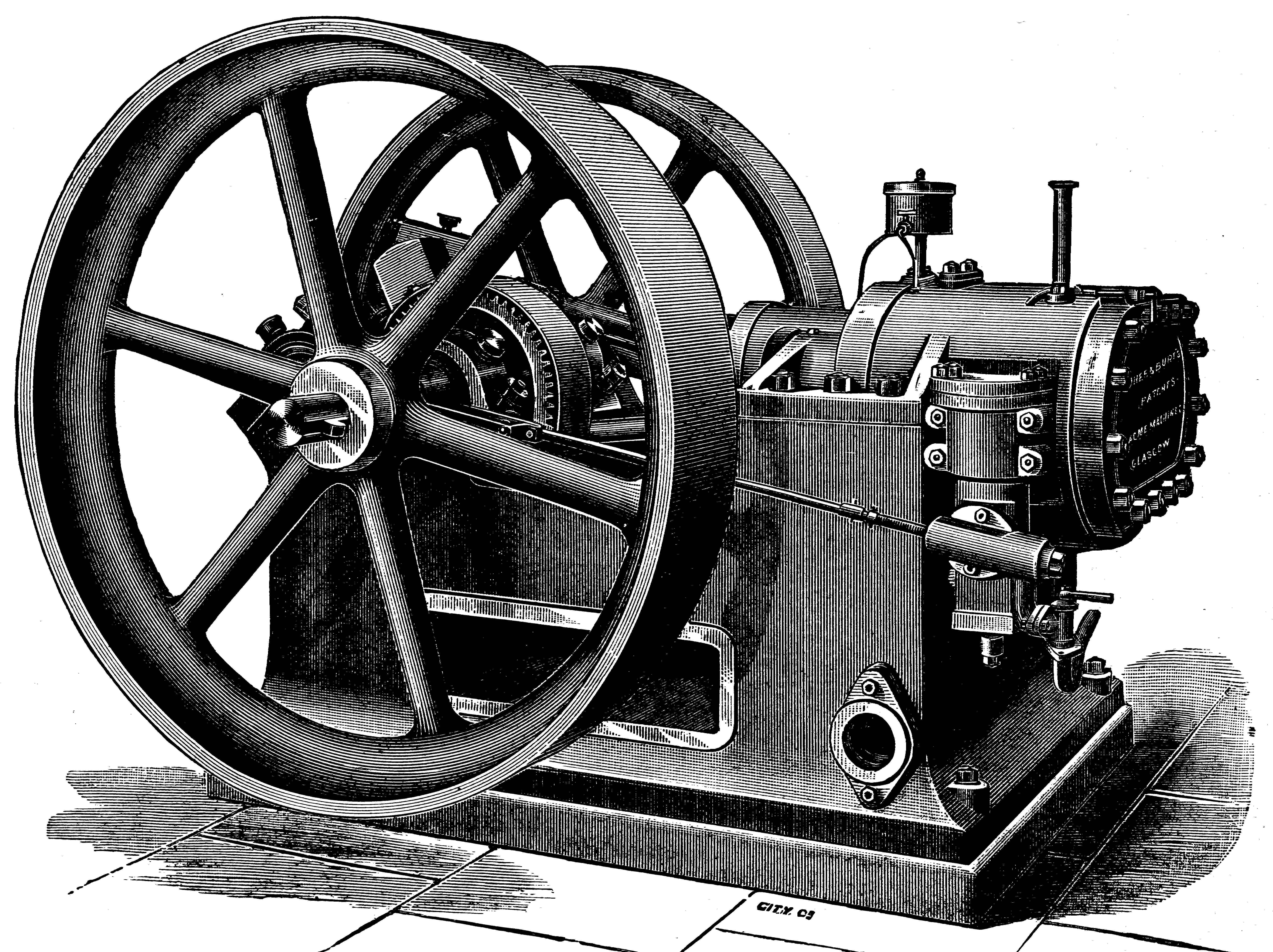
Acme Patent Gas Engine
THE ACME PATENT GAS ENGINE, Sole Makers:Alexander, Burt & Co., Engineers, Iron and Brass Founders, Mountblue Engineering Works, Camlachie, Glasgow.
It would be, indeed, surprising if a Glasgow firm were not at the front in the design and manufacture of that unexcelled and now indispensable motor the gas engine considering to what a point of perfection engineering, in all its branches, has been carried in the great Western Metropolis. Yet it is only very recently that a Glasgow firm have been able to obtain a distinct pre-eminence in this line. It was, in fact, in the great Glasgow Exhibition of 1888 that experts and engineers in general became cognisant of the fact that the Acme Gas Engine, made by the Acme Machine Company, of Henrietta Street, Glasgow, had stole away from all the older types.
The defect in engines of the Otto, Clerk, and Griffin types is that the exhaust valve opens while the pressure of the exploded gases in the cylinder is still at from 30 to 40 pounds per square inch above atmosphere. The force represented by this is entirely lost, instead of being utilized, as in the case of steam engines, by expanding till the pressure approaches that of the atmosphere ; that is to say, the engines of the older type only perform 75 or, at most, 80 per cent, of the work, which, by proper arrangements for expansion, they could otherwise do from using any given quantity of gas. All this was at once seen to be remedied in the Acme engine, with the pleasing corollary that the cost of working would be greatly reduced, and the general efficient power of the engine enhanced, in every way. In fact, the Acme is more economical in working than the best steam engines, costing, with Glasgow gas, no more than a halfpenny per brake-horse power per hour, a very close approach to the minimum possible under any conditions, if experts are not utterly mistaken.

It would not be easy to give any description of the Acme engine which would convey to the uninitiated in the mysteries of mechanics any adequate idea of the perfection and simplicity of its arrangements. Two cylinders, pistons, and shafts are used, the two shafts being connected by toothed wheels, which are geared in the ratio of 2 to 1, and so engaged, that, when the fast-moving piston is at its outer and inner dead points, the other piston is distant from its dead points by a distance corresponding to a motion of about 45 degrees of its crank, or, roughly, 1/7 of its whole stroke. Only one valve is required in this engine, namely, an automatic valve for admitting the charge of gas and air, the firing and exhaust being regulated by the piston.
The action is as follows : Suppose the engine to have
completed an exhaust. The main piston is now quite in, and the other returning
in, having just closed the exhaust ports. Let V be the volume swept by the main
piston, v that by the other, and C the amount of clearance, if both pistons
could be fully in at the same time. We start a volume C + 6/7 v.
1. The main piston takes an out-stroke, and the other returns in from about 1/7
to 6/7 of its in-stroke. The volume is now V + C + 1/7 v, and the in-take V
5/7 v.
2. The main piston makes an in-stroke, and the other completes the remaining
portion of its in-stroke and makes about 1/7 of its out-stroke, where the fire
tube is inserted. The compressed volume is now C + 1/7 v, and firing takes
place.
3. The main piston makes an out-stroke, and the other also travels out for about
5/7 of its out-stroke, thus expanding to a volume of V + 6/7 v + C.
4. The exhaust ports are now uncovered by the minor piston, which completes the
last 1/7 of its out-stroke, and returns 1/7 in, while the main piston is
returning in, thus completing the cycle. ----- William T. Rowden, B.Sc.,
Professor of Applied Mechanics, Andersons College, Glasgow.
He adds, after completing a series of exhaustive tests of engines under actual working conditions : The Acme engine shows a saving of 29 per cent, in the consumption of gas, when compared with the Otto engine. This furnishes conclusive proof of the value of the Acme gas engine as a motor, considering the very high efficiency of even the worst of the older types.
The Acme Machine Co. ceased to manufacture these engines since January of the present year ; Mr. Peter Burt, the proprietor of that firm, having entered into partnership with Messrs. George Alexander & Co., of Mountblue Foundry, the firm of Messrs. Alexander, Burt, & Co. being now the sole makers. Their finely-equipped and extensive works at Camlachie have had large workshops added for carrying on the manufacture of these engines, with every facility that experience, skill, and a new and improved plant can afford for the purpose. Their great foundry business will of course go on as formerly, but no doubt the Acme gas engine will ere long secure them the blue ribbon of the engineering trade of Glasgow.
Back to Index of Firms (1891)